Dubrovnik is widely known as the “Pearl of the Adriatic” because of its stunning tile-red roofs and medieval stone walls jutting into the sparkling, azure blue Adriatic Sea. It is on CNN’s list of the Ten Best Medieval Walled Cities and is a UNESCO World Heritage Site. Yes, Dubrovnik is most definitely a must-see place.
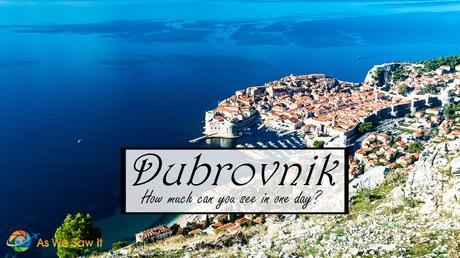
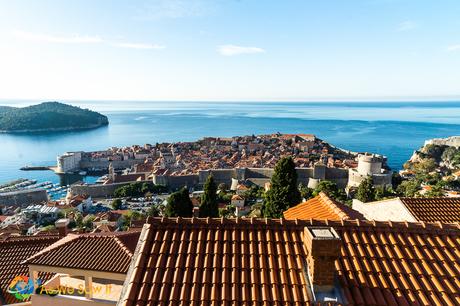
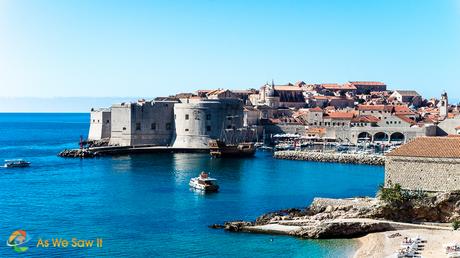
Dan and I had the chance to spend a day in Dubrovnik while we were on our recent Mediterranean cruise. Our ship docked far from the walled city, which meant we would need a taxi. Fortunately, we’d made friends with another photographer and his wife, Celia and Jim, who suggested we share the ride. When the driver offered to show us the area, we agreed. Heck, who knew when or if we might be back?
Mount Srd
Our driver began at Mt. Srd, a 412-foot-tall mountain that overlooks the city. A cable car runs from its base to the Napoleonic-era fort at the top.
Mt. Srd played an important role in the Siege of Dubrovnik, one of the fiercest battles of the 1991-1995 Croatian War of Independence. It gave them a great vantage point from which to bombard the city. One of their main targets was the terminal for the cable car for some reason. The new terminal is nicer and popular with tourists.
The long queue for the cable car is worth it. Look at the spectacular views from the top!
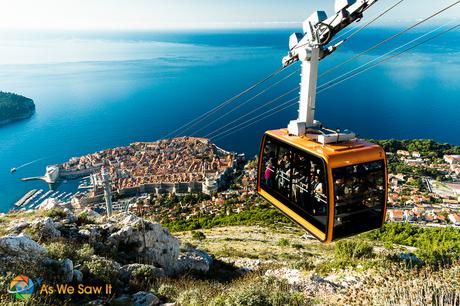
One one side is the lovely view of the old town, Lokrum Island offshore, and the coastline along the vast and gorgeous blue sea.
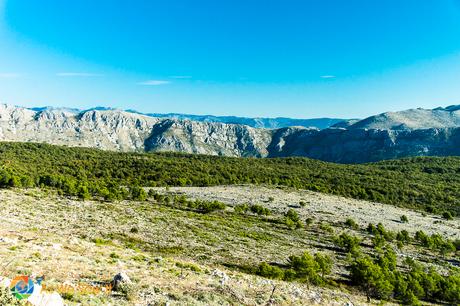
On the fort’s other side is a different world of mountains as far as the eye can see.
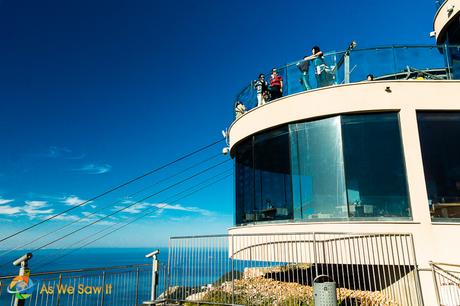
As usual they have a gift shop and small restaurant as well. I walked in to check it out; it’s very clean and bright, surrounded by glass and was really tempting to sit and refresh myself while taking in the fantastic view.

What would a tourist site be without vendors?
If you have the inclination and the energy you can walk down to town from the top. (You can climb up, too, but unless you’re craving a serious workout, it’s probably not the best use of your time if you’re only in Dubrovnik for one day.)
Kupari
We had the rare chance to glimpse a bit of Croatia’s stormy recent history as our driver took us to Kupari, a once-thriving tourist destination nearby. Doesn’t this look like an inviting resort?
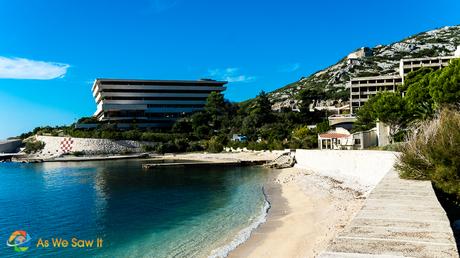
Get a little closer and you’ll see what Croatia’s war for independence cost her.
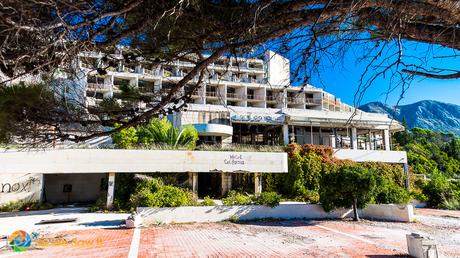

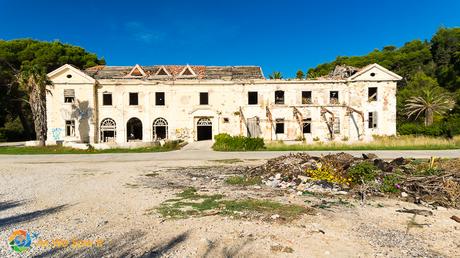
This was once a grand home.
Cavtat
Fifteen minutes was plenty of time for Kupari but the same couldn’t be said for our next destination. Cavtat would make a refreshing alternative to a day in Dubrovnik, only 30 minutes away. We enjoyed our time in the town a lot, though it meant we would have less time in Dubrovnik itself. Tradeoffs. Still, it was worth it to see what a typical Dalmatian town might be. We were enchanted.

Obviously, Dubrovnik must be part of your one day!
Finally … back to Dubrovnik. Our driver dropped us off at the city gate and agreed to pick us up in time for us to get back to the ship. The entrance not only had a gate but a bridge as well.

We heard a cacophony as soon as we entered the square. Children were everywhere, there were film cameras at every turn and a “director” of sorts was trying to get their attention from a window high above. Thus we hurried through, both to avoid both the swirling crowd of munchkins and parents and to escape the incredible racket. Better to return to this part of town later.
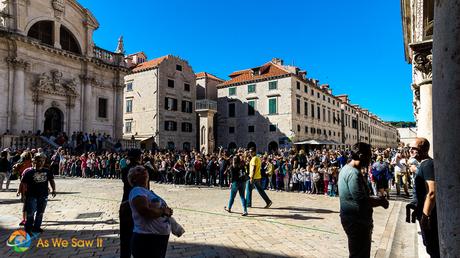
Dubrovnik has been a major seaport since the 13th century and even survived severe damage from an earthquake in 1667. They managed to restore their beautiful Gothic, Renaissance and Baroque churches, monasteries, palaces and fountains, which to my mind only adds to its appeal. I’m a sucker for medieval walled cities, old churches, and cobbled streets. And so is Dan. He has a “thing” for interesting old doors and windows and has the copious photos to prove it.
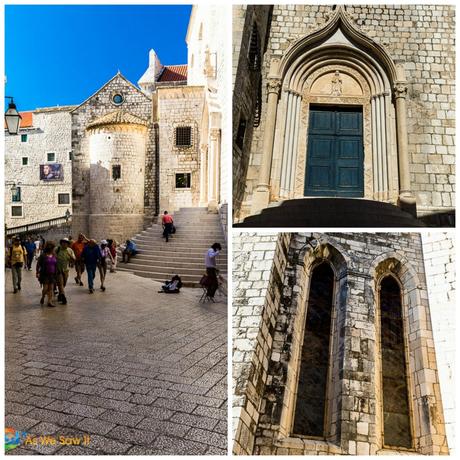
He also never misses a chance to photograph interesting locals.
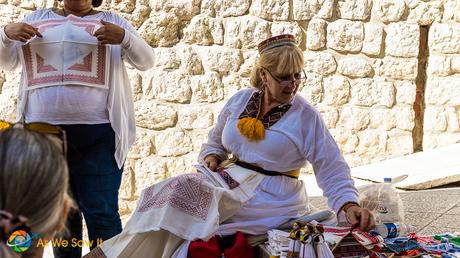
Unlike Cuenca, Ecuador, which shows its half-millennium of use, Dubrovnik wears its age well. Its streets are polished through centuries of use, its people are friendly and polite, the buildings are in good repair, and we saw no litter anywhere, even though the place was crawling with tourists.
Lunch in Dubrovnik
Somewhere on the other side of the city, we got hungry. Dubrovnik has more than 60 sidewalk cafes and restaurants, so it was no problem finding a place to eat. The hardest part was deciding where. Everything looked good.
We agreed that we’d prefer to sit outside, but wherever we chose it had to serve local food and we had to see locals eating there. They also had to accept Euros, because that was all Celia and Jim had.
Although Croatia has its own official currency, many hotels and restaurants will accept euros as a courtesy to foreign patrons. We’ve learned that their exchange rates usually aren’t very good, so when we entered the city we stopped at an ATM and got some Kuna. We’d be back in Croatia when our ship docked at Split, so we were pretty sure we’d use them up.
Anyway, we soon found ourselves outside a little cafe on a narrow side street. Like most restaurants in a tourist destination, ours had bilingual menus. (Well, actually they were multilingual; besides Croatian and English they were also in French and Spanish.) Jackpot! They were serving local cuisine.

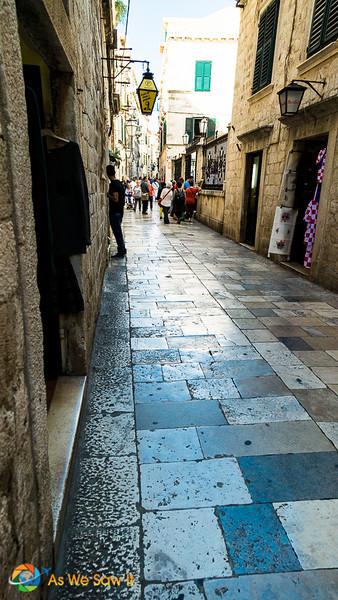

What is the local cuisine?
Glad you asked. Croatian cuisine differs depending on the region. Dubrovnik lies on the Dalmatian peninsula, that little sliver of Croatia that runs south along the Adriatic coastline. Dalmatian cuisine includes the best of the Mediterranean diet: fresh seafood, flavorful olive oils, fragrant herbs, and local red wines. Being a seaport, elements of other regions’ cuisines have contributed to its uniqueness. We ordered grilled fish while Celia and Jim ordered an octopus dish, and both were served with the traditional side of boiled potatoes drizzled with olive oil. Swiss chard is also a traditional accompaniment but alas, all we got was a salad.
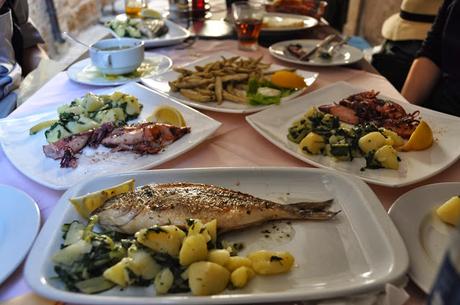
Photo courtesy of FoodSparks.blogspot.com.
Beautiful Orthodox churches
Religion is a huge part of Eastern European culture and it seemed there was an Orthodox church at every turn. Being Greek Orthodox, Celia knew that most Orthodox churches have the same setup, worldwide. Regardless of which country they’re in, you will always find:
- an overhead dome with an image of Jesus,
- Jesus’ disciples standing alongside him,
- a golden front wall, the Iconostasion, between the congregants and the altar.
- On the right-hand side of the Iconostasion you’ll always find the icons of Christ and John the Baptist.
- On the left-hand side are always the icons of Mary and the patron saint of the church.
- The Iconostasion always has three entrances to the altar: a center entrance which is called the Royal Door, flanked by a Deacon Door on either side.
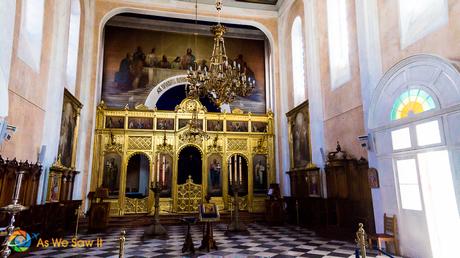
I really appreciated the beautifully crafted ikons and intricately painted portraits I saw in the churches … but I have to confess that, as beautiful as it was, the phrase “graven images” kept popping into my head. Go figure. Still I was quite impressed by both the excellent craftsmanship that was used and even more by how much silver I saw. This was surely a testament to how much the people desired to demonstrate their love for their god in their offerings of talents and wealth.
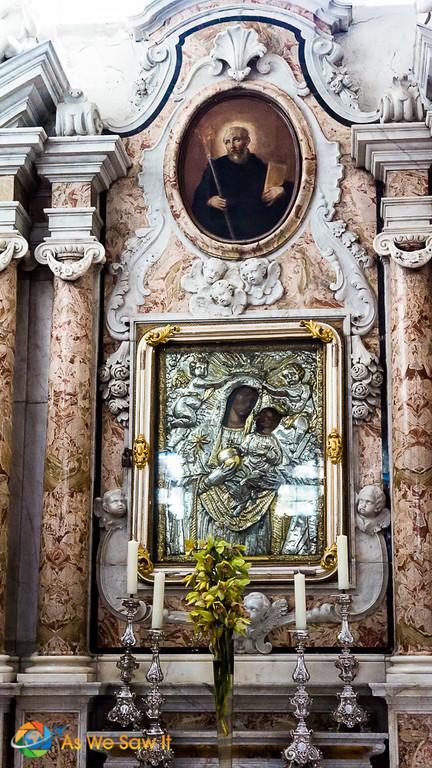
Walking Dubrovnik’s walls
Walking the walls is #1 on the list of things to do in Dubrovnik. Just as in the Middle Ages, you can walk all along its walls and see the city and ocean from some 80 feet above ground level. Let me tell you, it makes for spectacular views of both the city’s interior and the Adriatic.
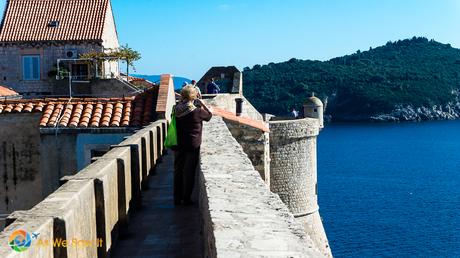
If you are in Dubrovnik for more than one day try to go early in the morning or later in the afternoon, when cruise ships are not in port. In the hotter months, the walls can get very hot and bright at midday as well, so dress coolly and remember your sunglasses.
Been there, done that?
If you are tired of UNESCO sites, you can spend a day in Dubrovnik swimming in the clear, blue waters and lying on the soft sand, soaking up Adriatic rays. Just don’t forget a towel and your sunscreen!
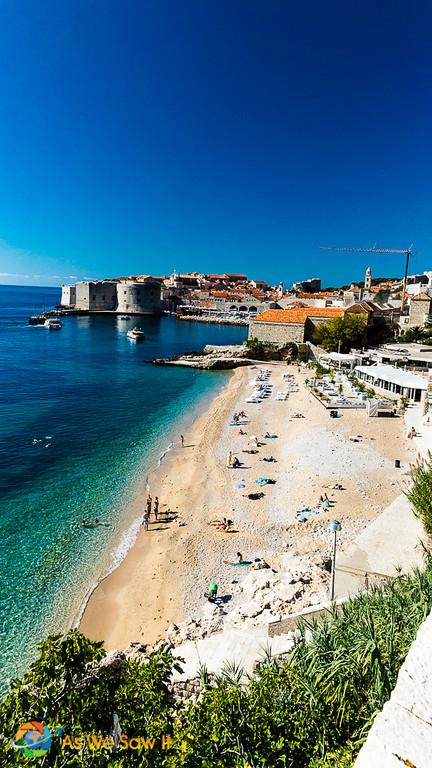
All too soon we had to head back to the ship. Our driver was waiting for us at 3:30 as we had agreed and got us there in plenty of time for departure.
Inspired?
See more: Enjoy more photos in our Dubrovnik photo gallery.
Read more:
- Lonely Planet Croatia (Travel Guide)
- Rick Steves Snapshot Dubrovnik
- City of Fortune: How Venice Ruled the Seas
Pin it: Click on the Pin It button to save this to your Pinterest travel board for future reference and inspiration.

This post appeared on The Weekly Postcard,
(Visited 7,922 times, 19 visits today)
